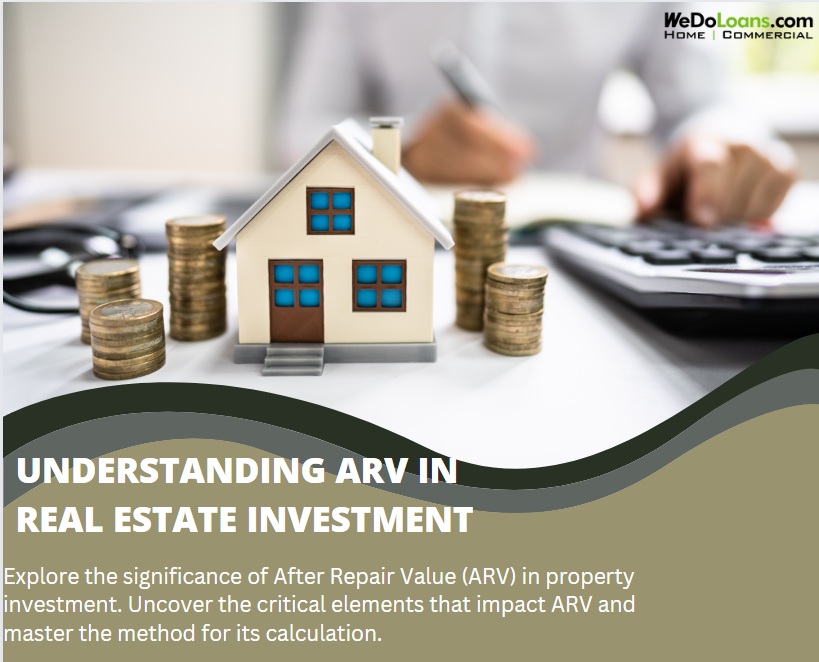What is ARV?
The After-Repair Value (ARV) is a critical metric for real estate investors, particularly those considering the rehabilitation of multi-family housing or commercial real estate. It represents the projected market value of a property after all planned renovations and repairs have been executed.
Why ARV Matters to Investors
ARV assists investors in evaluating the potential worth of a property post-renovation. This calculation is instrumental in making informed decisions about the purchase price, setting a budget for renovations, and determining the investment’s feasibility. Essentially, ARV equates to the property’s anticipated market value after refurbishments, ranging from major structural overhauls to minor aesthetic updates like installing new appliances.
Factors Influencing ARV
Understanding that ARV is an estimate and not a guaranteed value is vital. Several factors can influence the accuracy of ARV calculations:
- Purchase Price: Directly impacts ARV as it forms the base value to which repair costs are added.
- Extent of Repairs: The scale and nature of renovations can significantly affect the final ARV.
- Market Conditions: Current market dynamics are considered in ARV estimations, acknowledging that these can fluctuate even in the short term.
- Assumptions and Expertise: Accurate ARV figures rely heavily on the appraiser’s or investor’s assumptions, local knowledge, and experience.
Investors must also consider potential unknowns during renovations, which, while not contributing to the ARV, could affect the overall budget.
The Importance of ARV in Property Flipping
For those focused on flipping, understanding ARV is crucial for estimating the potential resale value of a property post-rehabilitation. This insight guides decisions on purchasing and the scope of work required. Additionally, for long-term holders, calculating ARV is essential when planning significant renovations or before selling to ensure the intended repairs justify the investment based on the expected increase in property value.
How to Calculate ARV
The calculation for ARV is straightforward:
After Repair Value = Purchase Price + Value of Renovations

Consider two scenarios:
- Residential Property: A 5-unit building requiring extensive repairs might have an offer price of $1.5 million, with renovations potentially adding $300,000 in value, raising the ARV to $1.8 million.
- Commercial Property: A shopping center transitioning part of its space for alternative uses with a $750,000 purchase price could see a $500,000 value increase from renovations, resulting in an ARV of $1.25 million.
The 70% Rule Explained
A common guideline in real estate investment is the 70% rule, which suggests that the total cost (purchase and repair) should not exceed 70% of the ARV. This strategy aims for a 30% return on investment, providing a buffer against unforeseen expenses or market shifts.
Utilizing After-Repair Value in Real Estate
After-repair value (ARV) is particularly effective when applied alongside the 70% rule by both investors and lenders in a couple of key ways.
Investors often leverage ARV and the 70% rule to establish a ceiling on their offering price for a property. This maximum purchase price is calculated as 70% of the ARV, minus the total estimated costs for repairs and renovations.
Maximum Purchase Price Calculation:
Maximum Purchase Price = (ARV×70%) − Estimated Repair Costs
For lenders, ARV serves as a basis to determine the highest loan amount they are willing to extend. Typically, this maximum loan is capped at 70% of the ARV, reflecting a 70% loan-to-value (LTV) ratio post-renovation.
Maximum Loan Amount Calculation:
Maximum Loan Amount = ARV × 70%
Conclusion
Regular ARV calculations are crucial, whether you are actively flipping properties or managing long-term investments. Accurate ARV assessments, combined with the 70% rule, help ensure that renovations are likely to yield a significant return on investment. Always ensure these evaluations are grounded in thorough market research and expert opinions to optimize the financial outcomes of your real estate ventures.

